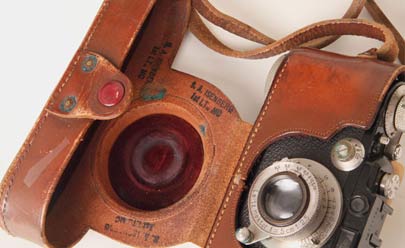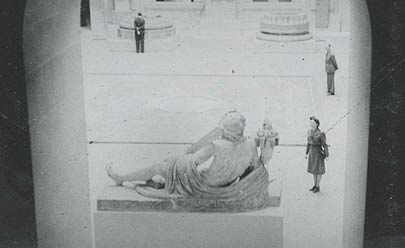ARTIFACTS: SOLDIER TOURISTS — PARIS
Soldier Tourists — Paris
Twenty-eight year old Stanley Isenberg visited Paris while on furlough in the summer of 1945. Isenberg completed medical school at New York University and was in the midst of his residency at Bellevue Hospital before joining the Army Medical Corps in January 1944. Captain Isenberg served as assistant battalion surgeon with the 44th Armored Infantry Battalion of the 6th Armored Division throughout Europe and earned several Bronze Stars for his meritorious service of “treating battle casualties under the most hazardous conditions and contributing materially to the saving of many lives.”
In addition to his talents in the medical field, Isenberg was also an avid photographer. He carried his Leica camera throughout his service in Europe, shooting images of both the nitty-gritty of the day-to-day life of a soldier and also capturing the eternal beauty and old-world charm of places such as Paris, Rome and Lugano. The documentation of his tour in Paris illustrates both the city’s lasting enchantment and also reflects the unique experience of a country newly free from Nazi occupation — only to be overrun with Allied soldier-tourists.
See More in This Series
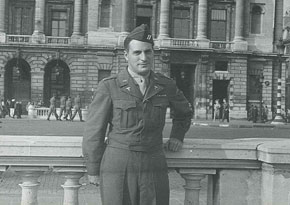 Captain Isenberg in Paris.
Captain Isenberg in Paris.
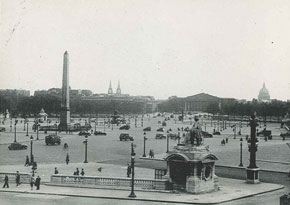 The Luxor Obelisk located at the center of the Place de la Concorde.
The Luxor Obelisk located at the center of the Place de la Concorde.
 The Avenue des Champs-Élysées, punctuated by the Arc de Triomphe.
The Avenue des Champs-Élysées, punctuated by the Arc de Triomphe.
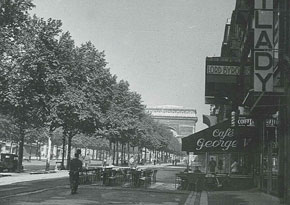 The Café George V still offers coffee on the Champs-Élysées.
The Café George V still offers coffee on the Champs-Élysées.
 A view through the Tuileries Garden toward the Arc de Triomphe du Carrousel, a much smaller version of the Arc de Triomphe built in 1808 to celebrate Napoleon’s military exploits.
A view through the Tuileries Garden toward the Arc de Triomphe du Carrousel, a much smaller version of the Arc de Triomphe built in 1808 to celebrate Napoleon’s military exploits.
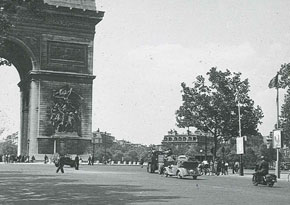 A closer view of the Arc de Triomphe and traffic-ridden Place de l'Étoile. Some things never change!
A closer view of the Arc de Triomphe and traffic-ridden Place de l'Étoile. Some things never change!
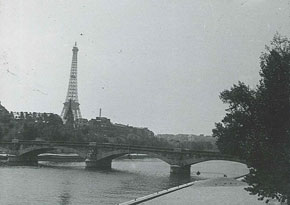 The Eiffel Tower as seen from the north side of the Seine River.
The Eiffel Tower as seen from the north side of the Seine River.
 The ornate Pont Alexandre III.
The ornate Pont Alexandre III.
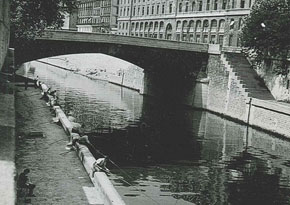 The Seine was and remains a place for socialization, though fishing in it is far less popular.
The Seine was and remains a place for socialization, though fishing in it is far less popular.
 The Seine.
The Seine.
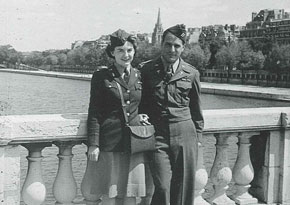 Captain Isenberg and a companion stand over the Seine.
Captain Isenberg and a companion stand over the Seine.
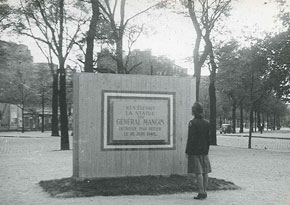 Isenberg’s companion reads that “Here was the statue of General Mangin destroyed by Hitler on 18 June 1940.” While visiting Paris, Hitler ordered the statue of the WWI general blown up.
Isenberg’s companion reads that “Here was the statue of General Mangin destroyed by Hitler on 18 June 1940.” While visiting Paris, Hitler ordered the statue of the WWI general blown up.
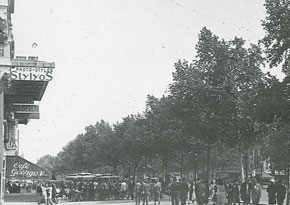 The ever-crowded Champs-Élysées was perhaps never so full of American servicemen.
The ever-crowded Champs-Élysées was perhaps never so full of American servicemen.
 Parisian cafés are made for people watching, a common French pastime then and now.
Parisian cafés are made for people watching, a common French pastime then and now.
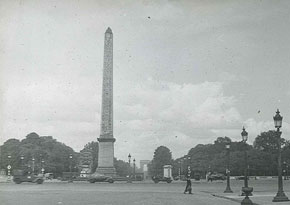 The Obelisk in the Place de la Concorde aligns with the Arc de Triomphe. Today, it is bookended with La Défense.
The Obelisk in the Place de la Concorde aligns with the Arc de Triomphe. Today, it is bookended with La Défense.
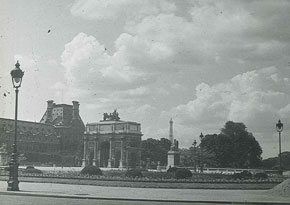 Another view of the Arc de Triomphe du Carrousel with the Louvre and Eiffel Tower in the background.
Another view of the Arc de Triomphe du Carrousel with the Louvre and Eiffel Tower in the background.
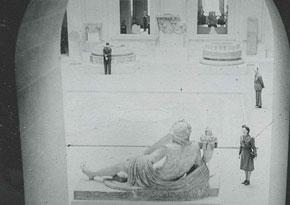 A view of museum-goers inside the famed Louvre.
A view of museum-goers inside the famed Louvre.
 A sign marking the entrance to the photographic exposition “SS Crime Hitlériens” held at the Grand Palais in summer 1945.
A sign marking the entrance to the photographic exposition “SS Crime Hitlériens” held at the Grand Palais in summer 1945.
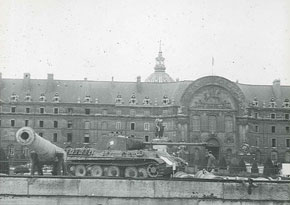 Remnants of war in front of Les Invalides.
Remnants of war in front of Les Invalides.
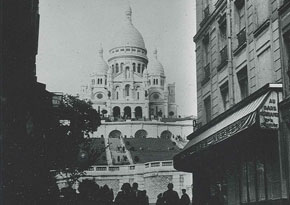 The Sacré Coeur Basilica in Montmartre, just yards from the Moulin Rouge
The Sacré Coeur Basilica in Montmartre, just yards from the Moulin Rouge
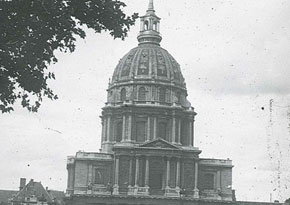 The golden dome of the Chapel of Saint Louis des Invalides, beneath which Napoleon’s tomb is located.
The golden dome of the Chapel of Saint Louis des Invalides, beneath which Napoleon’s tomb is located.
 The Leica camera used by Captain Isenberg to capture the images featured here.
The Leica camera used by Captain Isenberg to capture the images featured here.
 Isenberg’s Leica in its personalized leather case.
Isenberg’s Leica in its personalized leather case.


